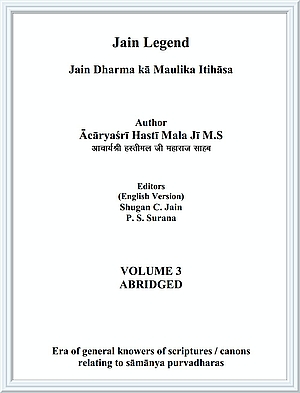It is an established fact that the tradition of religion and doctrine prevailing during the time of Lord Mahāvīra had undergone changes over period of time.
Why did the religious order, which maintained its unity and originality for approximately 600 years, undergo drastic changes and truncation in many units later on? It will be doing injustice to the great contributions made by Jains, if we assign all problems to the growing relaxations introduced by them in their code of conduct or to fulfil their personal egos of personal glory or worldly attainments.
A thorough unbiased study of the history of middle period along with the socio political conditions prevailing then will show that these were the dominant causes for such divisions and relaxations coming in Jainism also.
In fact the search for solutions for the difficulties inflicted on Jainism from time to time have themselves been the main cause of these divisions and sub divisions within Jain congregation. This was an era of blind religious faith as well as of religious intolerance emanating from it coexisting together, which had been the dominant causes for such splits and relaxations.
The extremely attractive temples, very attractive daily religious functions organized there with lots of fanfare, musical recitations of holy texts and songs, festivals and pilgrimages etc which were being organized by other Indian religious traditions were steering away traditional Jain followers towards them. Such mass exodus of Jain followers towards other religions started creating doubts in the minds of Jain ācāryas about the very survival of Jainism itself. They were therefore preoccupied in devising ways and means to stop this mass exodus. In this process they came to the conclusion to start using the same methods (as used by other religions) to attract their followers in their fold.
Thus Jainism started bifurcating into several units such as those who were prepared to adopt such new innovation in religious conduct and doctrine and those who wished to stick to the original tradition and conduct and many sub divisions in between.
The number of congregations and their members who adopted the changes kept on growing over period of time. At the same time, the number of followers of those who wanted to maintain status quo of the traditional and true doctrine kept on gradually decreasing. In this way, such changes and the impact of time, place etc kept on creating more sub divisions and those sub divisions which used material things in their rituals kept on growing in influence and reached the pinnacle of success during their time. However the effect of time cycle also took such sub divisions into its stride and they became extinct giving rise to new sub divisions. Temple dwellers, Yāpanīya etc can be considered such divisions.
This is how Lord Mahāvīra's congregation passed through such turmoil over period of time. Still the original tradition did not as yet become extinct. The ancient tradition of Lord Mahāvīra maintained its original form in small numbers and the same can be proven from many sides / viewpoints also.
On this basis, we are successful in presenting below the chronology of ācāryas and epochal ācāryas after Devardhigaṇi Kṣamāṣramaṇa.
 Acharya Hasti Mala
Acharya Hasti Mala
